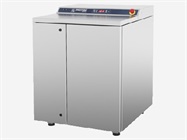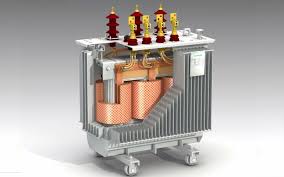MARKET OVERVIEW:
Global Laboratory Gas Generators market is estimated to reach $964.54 Million by 2031; growing at a CAGR of 6.4% from 2024 to 2031.
The growth of the Global Laboratory Gas Generators market is driven by the increasing demand from laboratories requiring high-purity gases on-demand. As research facilities and industrial labs focus on efficiency and accuracy, the reliance on traditional gas cylinders decreases in favor of gas generators that provide a continuous source of pure gases, enhancing safety and efficiency in the laboratory environment. The adoption of automated and advanced laboratory equipment further propels market growth, ensuring a constant supply of desired gases for various analytical instruments. However, challenges such as high investment costs and maintenance, especially for smaller laboratories with limited resources, may hinder widespread adoption. Despite these obstacles, advancements in technology offer growth opportunities by improving efficiency, reliability, and user-friendliness of gas generation systems, meeting the increasing demand for high-performance gas generators in analytical laboratories worldwide. The future of the Global Laboratory Gas Generators market looks promising as innovation and efficiency drive the development of reliable gas generation solutions to meet the evolving needs of laboratory operations.

MARKET SEGMENTATION
By Product
The Global Laboratory Gas Generators Market is experiencing significant growth due to technological advancements and the rising demand for efficient and reliable gas generation in laboratories worldwide. Various types of gas generators, including Nitrogen Gas Generators, Hydrogen Gas Generators, Zero Air Gas Generators, Purge Gas Generators, and TOC Gas Generators, play a crucial role in ensuring optimal functioning and efficiency in scientific research and industrial processes. In the coming years, the market for Laboratory Gas Generators is expected to expand further, driven by the need for high-purity gases in specialized laboratories requiring precise and consistent gas flow for a wide range of applications. Nitrogen Gas Generators are particularly important in industries such as pharmaceuticals, food, and beverages, offering a safer and more cost-effective alternative to traditional gas cylinders. Hydrogen Gas Generators are also gaining prominence, especially in energy research and environmental testing, as laboratories focus on sustainability and renewable energy sources. Zero Air Gas Generators and Purge Gas Generators are essential for providing ultra-pure air and removing contaminants from analytical systems, respectively, ensuring accurate and valid test results. The increasing demand for TOC gas generators for total organic carbon analysis reflects the growing need for stricter environmental monitoring and quality control. Overall, the global laboratory gas generators market shows great growth potential as laboratories continue to rely on these generators for reliable, high-purity gas generation to support various applications and ensure technological advancements, sustainability, and precision in laboratory activities.
By Application
The global laboratory gas generators market is poised for significant growth in the foreseeable future, driven by technological advancements that enable the provision of efficient and reliable gas generation systems for a wide range of scientific applications. Essential for laboratories requiring high-purity gases to ensure accurate and dependable results in various analyses, the acceptance of laboratory gas generators is expected to rise due to improved performance, safety, and environmental sustainability. The application of gas generators in instruments such as Gas Chromatography, Liquid Chromatography-mass Spectrometry, and Gas Analyzers has been instrumental in replacing traditional gas cylinders, offering uninterrupted gas flow and ease of operation. Storage in laboratory gas generators has become crucial for Liquid Chromatography-mass Spectrometry applications, where ultrahigh purity gases are essential for sensitive and accurate results. Similarly, Gas Analyzers benefit from the continuous and uncontaminated gases provided by gas generators, enhancing reliability and reducing operational costs. As the demand for reliable high-end gases in analytical applications continues to grow, the global laboratory gas generators market is expected to witness robust growth, driven by the need to enhance laboratory efficiency, safety, and sustainability.

By End-user
The laboratory gas generators market is poised for significant growth in the forecast period as industries increasingly seek efficient and cost-effective solutions for their gas needs. These devices generate high-purity gases in-house, eliminating the need for bulky gas cylinders. The demand for laboratory gas generators is being fueled by a growing focus on safety, convenience, and environmental concerns. These continuous gas generators provide uninterrupted gas supply, reducing the risk of exhausting crucial gases during research and production processes. The future of the Global Laboratory Gas Generators market looks promising, with advancements in technology and increasing demand for reliable gas supplies across various industries. Segmentation of the market based on end-users includes life sciences, chemical and petrochemical, food and beverage, among others, creating emerging opportunities for the adoption of laboratory gas generators. In the life sciences sector, these generators play a crucial role in chromatography, spectroscopy, and mass spectrometry applications, meeting the increasing precision and accuracy requirements in research and diagnostics. The chemical and petrochemical industries also rely on laboratory gas generators for various applications, driven by automation and advanced analytical technologies. Additionally, the food and beverage industry utilizes gas generators for quality control and testing processes, responding to consumer demand for safe and high-quality products. Overall, the market for laboratory gas generators is set to expand across a wide range of industries, driven by the need for dependable, efficient, and safe gas supply solutions that align with the evolving technological landscape and quality standards.
REGIONAL ANALYSIS
The global Laboratory Gas Generators market is poised for significant growth, driven by technological advancements and expanding research activities across different regions. Geographically, the market is segmented into North America, Europe, Asia Pacific, South America, and Middle East & Africa. In North America, the United States leads with a strong focus on research and development, creating a demand for high-quality laboratory equipment. Canada and Mexico also contribute to market growth through advancements in environmental science and healthcare research. Europe, with key players like the UK, Germany, France, and Italy, benefits from a mature pharmaceutical and biotechnology industry. Stringent regulations in the region ensure sustained demand for accurate gas generators in laboratories. The Asia-Pacific region, including India, China, Japan, and South Korea, is emerging as a high-growth market due to industrialization and increased research activities. South America, represented by countries like Brazil and Argentina, sees steady investment in research and development, particularly in agriculture and environmental studies. The Middle East & Africa region, including GCC Countries, Egypt, and South Africa, is recognizing the importance of advanced laboratory infrastructure for scientific progress, leading to a rise in demand for laboratory gas generators. Overall, the market is set for continuous growth and innovation as each region aligns with the evolving needs of industries and research institutions worldwide.

KEY INDUSTRY PLAYERS
The Global Laboratory Gas Generators market is a vital and expanding sector within the scientific and industrial fields. With laboratories worldwide emphasizing modernization and efficiency, there is a significant rise in the demand for reliable and high-quality gas generators. This market is primarily fueled by the necessity for consistent and pure gases essential for various applications such as chromatography, spectroscopy, and analytical processes. Leading players like Peak Scientific Instruments, PerkinElmer Inc., and Linde plc. are at the forefront of innovation, continuously developing advanced solutions to meet the evolving needs of laboratories. These companies focus on creating gas generators that offer high purity, efficiency, and user-friendliness to support a wide range of laboratory applications. Looking forward, the market is set for substantial growth as technology advances and laboratories become more specialized, driving the need for tailored gas generation solutions. The industry's future will also be influenced by increasing environmental concerns, with companies like Tisch Environmental, Inc. and CLAIND srl developing energy-efficient and eco-friendly gas generators in response to global regulations and sustainability trends. Moreover, advancements in automation and digitalization by companies like Parker Hannifin Corporation and OXYMAT are expected to further drive growth as laboratories aim to enhance operational efficiency and reduce manual intervention. Overall, the Global Laboratory Gas Generators market shows a promising trajectory with major players like Labtech SRL, LNI Swiss gas, and Airgas, Inc. leading the way, ensuring continued expansion in the coming years as laboratories continue to evolve.
REPORT SCOPE AND SEGMENTATION
|
Attributes |
Details |
|
Market Size By 2031 |
USD 964.54 Million |
|
Growth Rate |
CAGR of 6.4% |
|
Forecast period |
2024 - 2031 |
|
Report Pages |
250+ |
|
By Product Type |
|
|
By Application |
|
|
By End User |
|
|
By Region |
|
|
Key Market Players |
|



_page-000154.jpg)
_page-000155.jpg)
_page-000153.jpg)
_page-000152.jpg)


6.jpg)



 APAC:+91 7666513636
APAC:+91 7666513636





